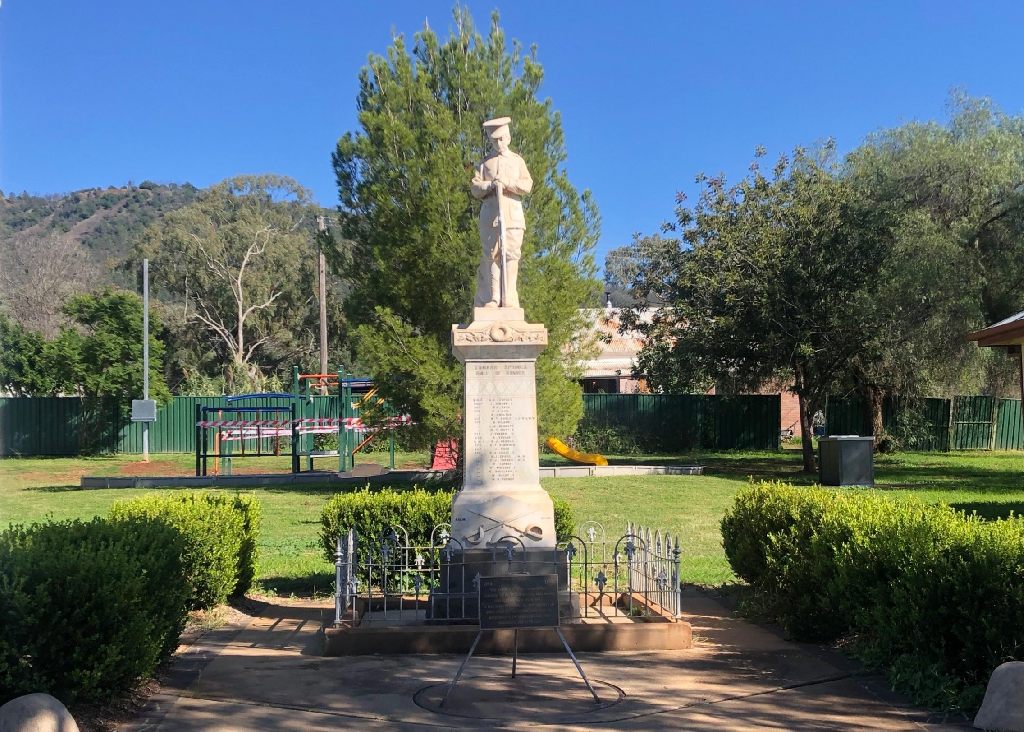A Sombre Chance Discovery - the Tambar Springs War Memorial
When passing through Tambar Springs recently, it was revealed that the community is not only famous for extinct Diprotodon bones. The local war memorial is possibly the oldest in Australia and its story harks to rural folklore.

While stopped for lunch in a park at Tambar Springs, I noticed a striking war memorial depicting a soldier with a sombre expression and downcast eyes, resting easy on the butt of his rifle. I took time to read the cenotaph and the plaque which estimated it to be the oldest World War 1 memorial in the country. Although I soon headed off to my property destination, the memorial stuck with me and I decided to do a little research.
In March of 1917, Australian soldiers on the Western Front were preparing to advance as German soldiers withdrew to a new strategic position. It would have been Spring but the Germans set fire to the territory as they receded, extending the moonscape of the battle fields all through the French countryside.
Devastating losses had been sustained and would continue to unfold throughout the war, but for a farmer in north-west NSW the greatest tragedy had already come to pass. A telegram had been delivered to Thomas Turner and his wife, Alice, at their property ‘The Folly’ in the Tambar Springs district. It delivered the news that their son, James, had been killed in action at the Battle of the Somme and his body unable to be recovered.
While the war was still raging, Turner began efforts to have his son, and those who served alongside him, immortalised in a memorial at the local rural village. Turner presided over community meetings as secretary of the fundraising committee and worked tirelessly in these efforts. The land purchase and stunning Italian marble memorial eventually cost 400 pounds.
The result of their efforts over a century ago was the memorial we see today. The statue of the soldier, standing atop a plinth, is three metres tall. He is said to strongly resemble a local 17 year old man, the son of a district farmer and the memorial’s principal benefactor, who had falsified his age to enlist when the recruitment march arrived in the district. It’s believed the tiny town had the highest rate of enlistment per capita in the nation. Of the 92 local soldiers whose names are etched on the memorial, 14 were killed in action.
Local historian Ron McLean told the Namoi Valley Independent that the cenotaph gave Tambar Springs a special place in the military history of Australia.
“They were farmers, farmhands, stock men, boundary riders, fencers and one teacher from the local school,” Mr Mclean said.
“They were fired with the ideal of defending the empire and totally unaware of the grim realities of war. The general consensus was that the war would be over by Christmas. It was a cataclysmic chapter of the world’s history.”
With ANZAC Day approaching and memorial services cancelled due to COVID-19 restrictions, the Tambar Springs obelisk reminds me of the quiet fortitude of our rural communities. Like generations past, we will get on with the job and pay our respects to those on the frontline.
by Michael Guest in Latest News
Share this post
Posts this year
- October 2024 (1)
- September 2024 (1)
- August 2024 (1)
- November 2023 (1)
- June 2023 (1)
- February 2023 (2)
- November 2022 (1)
- October 2022 (1)
- July 2022 (2)
- June 2022 (1)
Archived Posts
- Posts in 2023
- Posts in 2022
- Posts in 2021
- Posts in 2020
- Posts in 2019
- Posts in 2018
- Posts in 2017
- Posts in 2016
